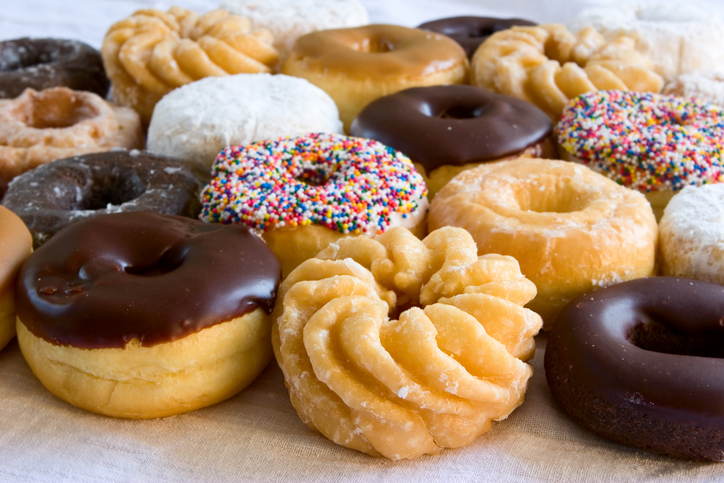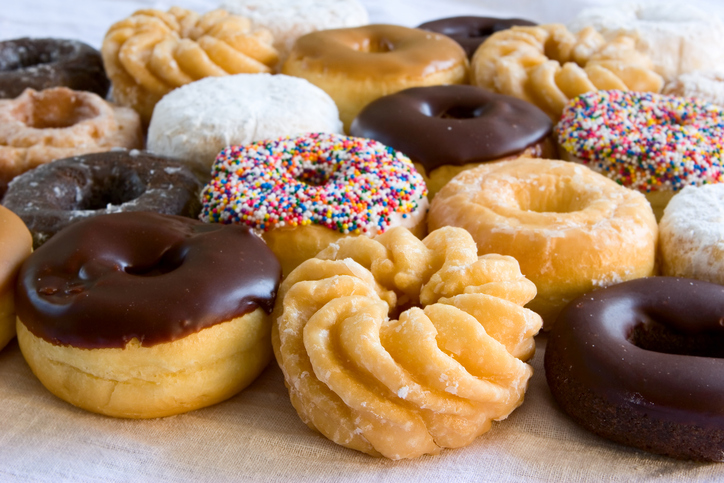Doughnuts (or donuts) have been around for ages. But where did they come from?
Oily Cake
When Dutch settlers arrived in what’s now New York in the 17th century, they brought with them something called olykoek, or “oily cake.” They were much like today’s doughnuts in that they were fried balls or discs of sweetened dough…but they weren’t ring-shaped with a hole in the middle. A man named Hanson Gregory claims to have turned olykoeks into that more familiar shape when he was working on a lime-trading ship in 1849.
What’s the name mean?
The dough part is obvious, but what’s with the nut? In his 1809 book A History of New York, Washington Irving says that nuts were sometimes added to the dough for flavor, or that the nut was placed in the middle to help the pastry maintain its shape. Another more likely theory is that the treats were tied together at the end, in a knot. Over time, and into English, “knot” evolved into “nut.”
Bear Claw
The Bear Claw is an especially large glazed doughnut. It was created in the U.S. in 1920. There’s so much yeast in it that it makes the slits cut into it rise and puff out, looking like the toes on a bear’s claw.
Old Fashioned doughnut
It’s not just a clever name. The Old Fashioned doughnut has been around since the 1820s. It’s made in the shape of a ring with tapered edges and gets some its distinctive texture from added sour cream or buttermilk.
Long Johns
Long Johns, also called “chocolate bars” or “maple bars” because of their most popular frosting toppers, are a non-cream-filled version of a French éclair.
“I am a jelly doughnut!”
There’s a misconception that at a speech in Germany in 1963, President John F. Kennedy uttered the phrase “Ich bin ein Berliner!” which the local audience laughed at, because JFK had just said “I am a jelly doughnut!” But the jelly doughnut, also called a Berliner, really did originated in Germany. The jam- (or custard-) filled pastry dates to 15th century Nuremburg.









